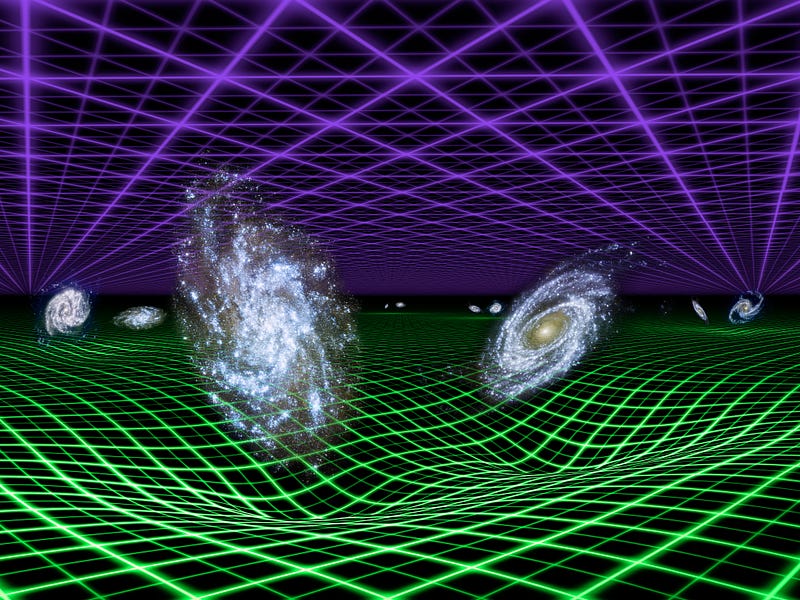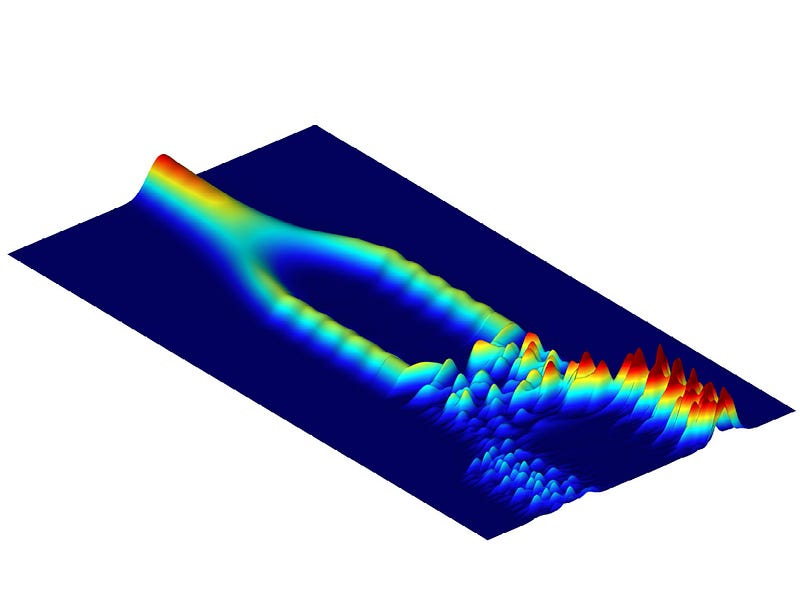It still amazes me that everything I see is made up of only some few dozen particles and four interactions. For all we know. But maybe this isn’t all there is? Physicists have been speculating for a while now that our universe needs a fifth fundamental force, one responsible for the phenomenon of dark energy, to maintain the observed expansion rate. Although this idea has been around for more than a decade, it has turned out to be very difficult to test. A new paper by Burrage, Copeland and Hinds from the UK now proposes a test based on measuring the gravitational attraction felt by single atoms.
Dark energy is often portrayed as mysterious stuff that fills the universe and pushes it apart, but stuff and forces aren’t separate things. Stuff can be a force carrier that communicates an interaction between other particles. In its simplest form, dark energy is an unspecified smooth, inert, and unchanging constant, the “cosmological constant.”
But for many theorists, such a constant is unsatisfactory because its origin is left unexplained. A more satisfying explanation would be a dark-energy-field that fills the universe and has the desired effect of accelerating the expansion by modifying the gravitational interaction on long, super-galactic, distances. Adding a fifth force rather than a cosmological constant would integrate dark energy better into the theoretical framework of the standard model.
The problem with using fields to modify the gravitational interaction on long distances and to thus explain the observations is that one quickly runs into problems at shorter distances. The same field that needs to be present between galaxies to push them apart should not be present within the galaxies, or within solar systems, because we should have noticed that already.
About a decade ago, Weltman and Khoury pointed out that a dark energy field would not affect gravity on short distances if it was suppressed by the density of matter. The higher the density of matter, the smaller the value of the dark energy field, and the less it would affect the gravitational attraction. Such a field thus would be very weak within our galaxies, and only make itself noticeable between galaxies where the matter density is very low. They called this type of dark energy field the “chameleon field” because it seems to hide itself and merges into the background.

This dependence of the chameleon field on the matter density comes about because of the way it interacts with other particles (including dark matter). Besides this unusual interaction though, it is a normal scalar field, that is the simplest sort of field there is, similar to the Higgs field and the conjectured inflaton field that is believed to cause the fast expansion of the universe in its very early stages. The chameleon field is characterized by only two parameters, that is the strength of its interaction with other matter, and the interaction with itself. It is an appealing explanation for dark energy because it is simple.
But the very same property that makes the chameleon field such an appealing explanation for dark energy is also what makes it so hard to test. “Fifth force” experiments in the laboratory measure the gravitational interaction to very high precision, and they have so far reproduced standard gravity with ever increasing reliability, going all the way down to micron-scale measurements. These experiments are, however, not sensitive to the chameleon field, at least not in the parameter range in which it might explain dark energy. That is because the existing fifth force experiments measure the gravitational force between two macroscopic probes, for example two metallic plates, and the high density of the probes themselves suppresses the field one is trying to measure.
In their new paper, Burrage et al. show that one does not run into this problem if one uses a different setting. To begin with they say the experiment should be done in a vacuum chamber as to get the background matter density to be as small as possible, and the value of the chameleon field as high as possible. The authors then show that the value of the field inside the chamber depends on the size of the chamber and the quality of the vacuum, and that the field increases towards the middle of the chamber. They calculate the force between a very small, for example atomic, sample and a larger sample, and show that the atom is too small to cause a large suppression of the chameleon field. The suppression, it turns out, depends not only on the density of the sample but, in the given configuration, also on the radius of the sample. One atom doesn’t suppress the chameleon field much simply because it is small.
The gravitational attraction between two atoms is too feeble to be measurable, so one still needs one macroscopic body. But when one looks at the numbers, replacing one macroscopic probe with a microscopic one would be enough to make the experiment sensitive to find out whether dark energy is a chameleon field, either in part or in whole.
One way to realize such an experiment would be by using atom interferometry which has previously been demonstrated to be sensitive to the gravitational force. In these experiments, an atom beam is split in two, one half of it is subjected to some field, and then the beams are combined again. From the resulting interference pattern one can extract the force that acted on the beams. A similar setting could be used to test the chameleon field.

Holger Müller from the University of California at Berkeley, an experimentalist who works on atom interferometry, thinks it is possible to do the experiment. “It’s amazing to see how an experiment that is very realistic with current technology is able to probe dark energy. The technology should even allow surpassing the sensitivity expected by Burrage et al.,” he said.
I find this a very interesting paper, and also a hopeful one. It shows that while sending satellites into orbit and building multi-billion dollar colliders are promising ways to search for new physics, they are not the only ways. New physics can also hide in high precision measurements in your university lab. A tiny deviation from your expected results might not be an indicator of a flawed experiment, but rather the first hint of revolutionary new physics; just ask the theorists. Who knows? There might be a chameleon hidden in your vacuum chamber.
